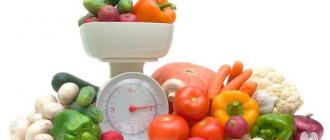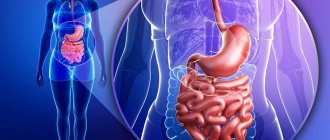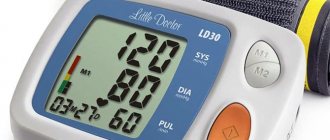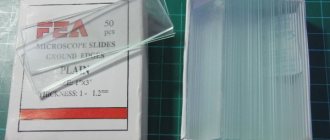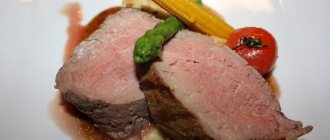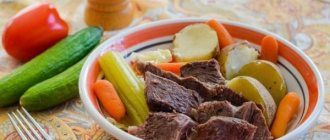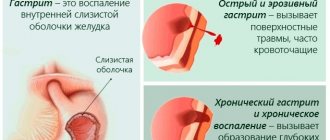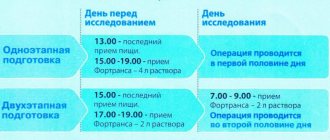Human nutrition during exacerbation of chronic pancreatitis Pancreatitis refers to an inflammatory process of a degenerative nature that occurs in the pancreas. Since this disease tends to become chronic, the issue of nutrition during exacerbation of chronic pancreatitis becomes of great importance. The fact is that the load on this organ depends on nutrition, and a proper diet can relieve it, which will lead to a faster recovery for the patient.
What can you eat?
The question has two parts.
For acute pancreatitis
They cook thin porridges, soups without dressing, and stews. For porridges, oatmeal, semolina, buckwheat, and rice are used. Vegetables are chosen without a choleretic effect - potatoes, zucchini, carrots.
Pumpkin and green peas are prepared in the form of puree. Pumpkin also makes excellent soufflés and casseroles. But still, this healthy vegetable is eaten with caution, especially if there are already problems with sugar in the body.
The fish is mostly steamed, but it is also possible to make steamed cutlets and quenelles from it. The meat is used to make pates, minced meat, steam soufflés and puddings.
Drinks are prepared without sugar; compotes made from apples or dried fruits and white cherries are useful. In addition, you can drink green tea, rosehip infusion with chamomile, or these herbs separately. When the disease begins to subside, you can drink fruit and milk jelly. Baked goods – puddings and casseroles. For sweets – fruit jelly cakes, biscuits, cookies such as “Chess”, “Maria”, “Napoleon”.
For chronic
In a state of remission, you can eat anything, but there are restrictions on food preparation technology and portion size. You cannot cook food by frying or baking with a lot of oil. Food should be boiled, steamed or baked. Small portions make it possible to slowly process food without attacks of malaise. Chronic pancreatitis occurs very individually for everyone, and you need to listen to your body.
Important! It is unlikely that you will be able to stay on a strict diet all your life, so the diet is expanded within reasonable limits. The most important thing is not to overeat and not to eat food that openly provokes an exacerbation of the disease.
Therefore, in a state of remission, you can allow borscht with cabbage, but not with meat broth. Or there is a desire to eat mackerel - we eat it, but not smoked or salted, but bake it. The same applies to meat - cook in a gentle mode with a minimum of spices.
We choose sweet and ripe fruits. There is an opinion that the pancreas loves orange foods. You can eat peaches, persimmons, apples, pears, plums, and cherries.
It is permissible to eat one banana per day. The berries are used to prepare a mousse or soufflé; when eaten raw, you can eat them little by little, choosing only sweet varieties.
Sweets should be chosen very carefully, without containing dyes or flavors. Marmalade, marshmallows, marshmallows, and Turkish delight are allowed for consumption. At home you can prepare yoghurt-jelly fruit cakes, soufflés and puddings.
Main symptoms of exacerbation and recommendations for proper nutrition
Signs of exacerbation of the disease
With pancreatitis during an exacerbation, the following symptoms are observed:
- severe bloating;
- nausea and vomiting;
- gray loose stools;
- sharp pain in the hypochondrium that occurs after a meal;
- elevated temperature.
General recommendations on nutrition during an exacerbation period
As soon as the disease begins to worsen, it is necessary to completely abstain from eating for one or two days, and also provide the person with complete rest. You are allowed to drink still water or warm, weak tea. In the future, nutrition during an exacerbation should help reduce the load on the pancreas as much as possible. To do this, it is recommended to eat low-fat foods rich in easily digestible protein. In this case, you should choose food with a soft texture, because rough food irritates the stomach. During the period of exacerbation of chronic pancreatitis, it is better to eat small meals 4-6 times daily.
We also recommend viewing: Cabbage for pancreatitis - more harm or benefit?
What can't you eat?
In acute pancreatitis, it is necessary to relieve swelling as quickly as possible. For this, in addition to drug treatment, diet food table No. 1 is prescribed. Restrictions are placed on the consumption of salt and sugar. Excess salt retains fluid in the body, and sugar creates increased intraductal pressure.
Due to the high sugar and fiber content, raw fruits are not allowed. Vegetables are also subject to heat treatment. As for vegetables, you should not eat radishes, turnips, or white cabbage. Spinach, sorrel, horseradish, onions and garlic are also prohibited. You should not eat porridges that are difficult for the stomach - millet, pearl barley, corn. Meat should be chopped, fish should be boiled or steamed. All food should be easily digestible and fairly bland.
Important! A sick pancreas is an extremely capricious lady. If she doesn't love something, it's forever. There are a number of foods that pancreatitis sufferers should never eat.
Even with long-term stable remission, you should not eat smoked food. This will inevitably lead to aggravation. Ice cream in combination with sparkling water is also strictly prohibited. You should not drink fruit juices: this is a big burden for the pancreas.
Radish stimulates the secretion of the digestive organs, so even in a state of remission it is prohibited. Mushrooms cause increased gas formation and are poorly digestible - a product not for an inflamed pancreas.
Important! Do not eat: marinades due to the abundance of vinegar, pickles due to excess salt and carbon dioxide. However, while a piece of pickled cucumber can sometimes be eaten, a pickled cucumber is absolutely not.
Always prohibited, regardless of your health, are chips, fast food, snacks, crackers with flavoring additives, cakes with sour cream and butter creams, shelf-stable biscuits, shortbread cookies. These products will not lead to instant death, but their consumption incredibly weakens an already diseased organ.
Proper diet during exacerbation of pancreatitis
Useful foods for pancreatitis
A diet for exacerbation of pancreatitis involves including the following products in the diet:
- liquid porridges made from rice, oatmeal, buckwheat and semolina in water;
- potato and zucchini puree;
- steamed fish or lean meat cutlets;
- boiled veal, chicken and turkey;
- kefir and yogurt;
- sweet apples and pineapples;
- tomatoes, cucumbers, carrots, potatoes, cauliflower and other vegetables in the form of soups or casseroles;
- low-fat cottage cheese;
- weak tea, still water, rose hip decoction.
What should be excluded from the diet during an exacerbation of the disease
A diet for exacerbation of chronic pancreatitis involves a complete rejection of foods that are dangerous for this disease, such as:
- bakery products;
- sausages and sausages;
- fried eggs;
- beans and peas;
- sauces and mayonnaise;
- fresh milk;
- fatty meat and fish;
- millet and pearl barley are difficult to digest;
- canned fish and caviar.
Diet for pancreatitis for every day
For breakfast, it is best to eat porridge, which will give the body the right carbohydrates. A baked apple or pumpkin is perfect for a snack; you can combine them and prepare a soufflé, cook jelly, bake with cottage cheese, or make puree. Lunch should include a liquid dish - vegetable soup, fish soup, borscht, cabbage soup.
For the second course, prepare a vegetable casserole with minced meat, and season the salad with vegetable oil. For dinner, fish baked with vegetables or cooked into cutlets is suitable. Once a day, preferably at night, drink a fermented milk drink.
Sample menu for one week
Before following the menu options described below, you should consult your doctor.
Also read: Bananas for pancreatitis, is it possible or not, rules of consumption
Monday
You can have a steamed omelet for breakfast, wash it down with rosehip tea. For second breakfast, prepare a baked pear, and for an afternoon snack, drink milk and crunch with breadcrumbs. In the evening you can cook boiled breast and porridge in water.
Tuesday
The next morning, prepare manna, you can add some raisins, and for second breakfast, boiled rice and cabbage. For lunch, prepare soup, such as a vegetarian and meat dish. Drink compote or low-fat milk. In the evening, buckwheat or oatmeal porridge and tea, or a vegetable casserole.
Wednesday
In the morning, rosehip tea, some cheese and cheesecakes. For second breakfast, you can have buckwheat porridge and drink apple juice. Beef cutlets and pumpkin puree are available for lunch. Rice pudding and juice are ideal for an afternoon snack, and a vegetable casserole for the evening.
Thursday
You can relax a little, prepare an omelet and tomato for the morning, a vinaigrette for the second breakfast, but just do not use sauerkraut and salty foods. For lunch you can enjoy boiled cod and rice soup, and milk and boiled meat for an afternoon snack. In the evening you can have semolina porridge and tea with milk.
Friday
On this day you can eat the same way as Monday. But, for the evening, you are allowed to prepare a croup of cottage cheese and buckwheat.
Saturday
Morning: cottage cheese pudding, carrot puree for the 2nd breakfast, if desired, you can add a little jam. For lunch, vegetarian borscht and a meat dish. An afternoon snack is just a drink, for example berry jelly, and for the evening a low-fat fermented baked milk.
Sunday
You can eat similarly to the environment, but for lunch you are allowed to prepare zucchini soup and baked rabbit in sour cream.
This option for weekly nutrition can be used not only during illness, but also as a preventive measure for gastrointestinal diseases. The main thing to remember is to immediately consult a doctor if symptoms worsen to prevent serious complications.
Example menu
An example of a rational, balanced diet is presented in this menu, scheduled by day. You can adjust it to your taste, include other dishes, but within the framework of the dietary table. Calorie content should not exceed 2800 kcal. This diet option is suitable for patients with pancreatitis in the chronic stage.
Monday
- Breakfast: steam omelette, bread with cheese, tea.
- 2nd breakfast: sponge cake without cream; fruit jelly.
- Lunch: carrot salad with dried apricots and prunes; vegetable puree soup; baked chicken breast with vegetables (eggplant, tomato, onion); dried fruits compote.
- Afternoon snack: yogurt, biscuits.
- Dinner: mashed potatoes; steamed fish cutlet; cucumber. Camomile tea.
Tuesday
- Breakfast: buckwheat porridge; beets boiled with olive oil; tea.
- 2nd breakfast: apple stuffed with cottage cheese, baked in the oven.
- Lunch: salad of cucumbers and tomatoes with sunflower oil; vegetarian borscht with fresh cabbage; meat pudding; rosehip decoction.
- Afternoon snack: baked pie; coffee made from chicory roots.
- Dinner: vegetable and cereal cabbage rolls with sour cream sauce; tomato juice.
Wednesday
- Breakfast: milk oatmeal; tea.
- 2nd breakfast: pumpkin soufflé.
- Lunch: vinaigrette; rice soup with tomatoes; potato casserole with beef, onions and carrots; green tea.
- Afternoon snack: fruit jelly; curd mass with raisins.
- Dinner: stewed rabbit meat; broccoli salad with apple; compote.
Thursday
- Breakfast: dumplings with cottage cheese; tea.
- 2nd breakfast: berry-semolina mousse.
- Lunch: soup with meatballs; pollock with assorted vegetables; tea with herbs.
- Afternoon snack: milk jelly.
- Dinner: soft-boiled egg; cabbage casserole with ground beef; kefir.
Friday
- Breakfast: buckwheat with sour cream sauce; green tea.
- 2nd breakfast: cottage cheese casserole with raisins and fruit.
- Lunch: creamy soup with tuna; pickle; vegetable pilaf; compote.
- Afternoon snack: baked pumpkin.
- Dinner: chicken cutlets; green pea; boiled potatoes with dill; rosehip decoction.
Saturday
- Breakfast: millet porridge with milk; tea.
- 2nd breakfast: baked pear.
- Lunch: carrot salad with apple; beet soup; zucchini baked with minced beef and rice in milk sauce; coffee made from chicory roots.
- Afternoon snack: fruit jelly; oat cookies.
- Dinner: meat pudding; vegetable stew; Ryazhenka
Sunday
- Breakfast: semolina porridge with milk; rosehip decoction.
- 2nd breakfast: cottage cheese soufflé.
- Lunch: vinaigrette with soaked herring; vegetable soup with millet; cabbage zrazy with minced beef; green tea.
- Afternoon snack: berry jelly; Lenten cookies.
- Dinner: baked pie with minced fish, rice and egg; cucumber salad with dill. Yogurt.
Nutrition for pancreatitis is aimed at restoring the functioning of the digestive organs. The diet for pancreatitis for every day must comply with the requirements. The menu for each day is compiled taking into account the required daily calorie content.
Useful foods for pancreatic diseases
In order for the benefits of the diet to be maximum, it must be enriched with protein and those foods that cannot lead to fat and vitamin deposition.
Excess fat should be avoided, but it is advisable to give preference to protein foods.
Nutritionists recommend replenishing the necessary reserves of carbohydrates by consuming honey, jam, fruits, and vegetables.
The patient's daily diet may contain the following foods and dishes:
- low-fat dairy products
- chicken or turkey without skin
- rabbit, lean beef
- boiled vegetables
- vegetarian soups with grated vegetables and boiled cereals
- rice, oatmeal, buckwheat and semolina porridges should have a viscous consistency
- soft ripe fruits and berries are allowed
- It is possible to flavor ready-made dishes with vegetable or butter.
What dishes can be presented on the menu for lesions of the pancreas and liver:
For breakfast:
- cottage cheese with milk
- cheesecakes, only low-fat ones
- buckwheat or rice porridge
- cabbage cutlets
- boiled fish
- dishes prepared from lean meat.
For lunch:
- milk noodle soup
- cereal porridge with boiled chicken
- vegetables
- berry jelly
For dinner:
- vegetable stew
- potatoes with boiled fish
- porridge without adding oil
- kefir
Second dinner:
- Before going to bed, you are allowed to eat dried apricots or prunes.
If pancreatic pathology develops in children and adults, it is necessary to fast for two days and drink liquids only with the doctor’s permission. Only from the third day cottage cheese, vegetable puree, and liquid porridge are added to the diet. This diet must be followed for at least 7 days.
As the patient's exacerbation period passes, he is gradually transferred to a special diet.
The selection of dietary intake and nutritional adjustments for patients with pathologies affecting the pancreas should be carried out exclusively by a specialist.
Basic principles of the diet
Within a week after the onset of acute inflammation, they gradually switch to a low-calorie diet. It is allowed to eat anything that does not cause an exacerbation of symptoms. Protein consumption should be 1.5 g per 1 kg of body weight, fat - from 7 to 15 g per 1 kg of body weight per day. It is recommended to provide the body with 25-35 kcal per 1 kg of body weight per day through food.
Consumption of vitamins and minerals:
| Vitamins and minerals | Daily consumption |
| Vitamin A | 0.8-1.0 mg |
| Vitamin D | 20 mcg |
| Vitamin E | 11-15 mg |
| Vitamin K | 60-80 mcg |
| Thiamine | 1.0-1.3 mg |
| Folic acid | 300 mcg |
| Calcium | 1000 mg |
| Magnesium | 300-400 mg |
| Zinc | 7-16 mg |
Frequency - not 3-4 large meals, but 6-7 small ones with an interval of 2.5-3 hours. Diet and abstinence from alcohol are the best prevention of acute inflammation of the pancreas. Also, the risk of pancreatitis decreases with lower blood cholesterol levels.
The diet for chronic pancreatitis includes: protein 10-15%, carbohydrates 35-50%, fat 35-40%.
Previously, patients with pancreatitis were recommended diets with an absolute ban on fat. Enzyme replacement therapy makes it easier to digest any food. Trade names of drugs: Creon, Pancreatin. Festal is preferable when pancreatic inflammation is combined with gall and liver diseases. For acute pancreatitis, enzymes are not used.
